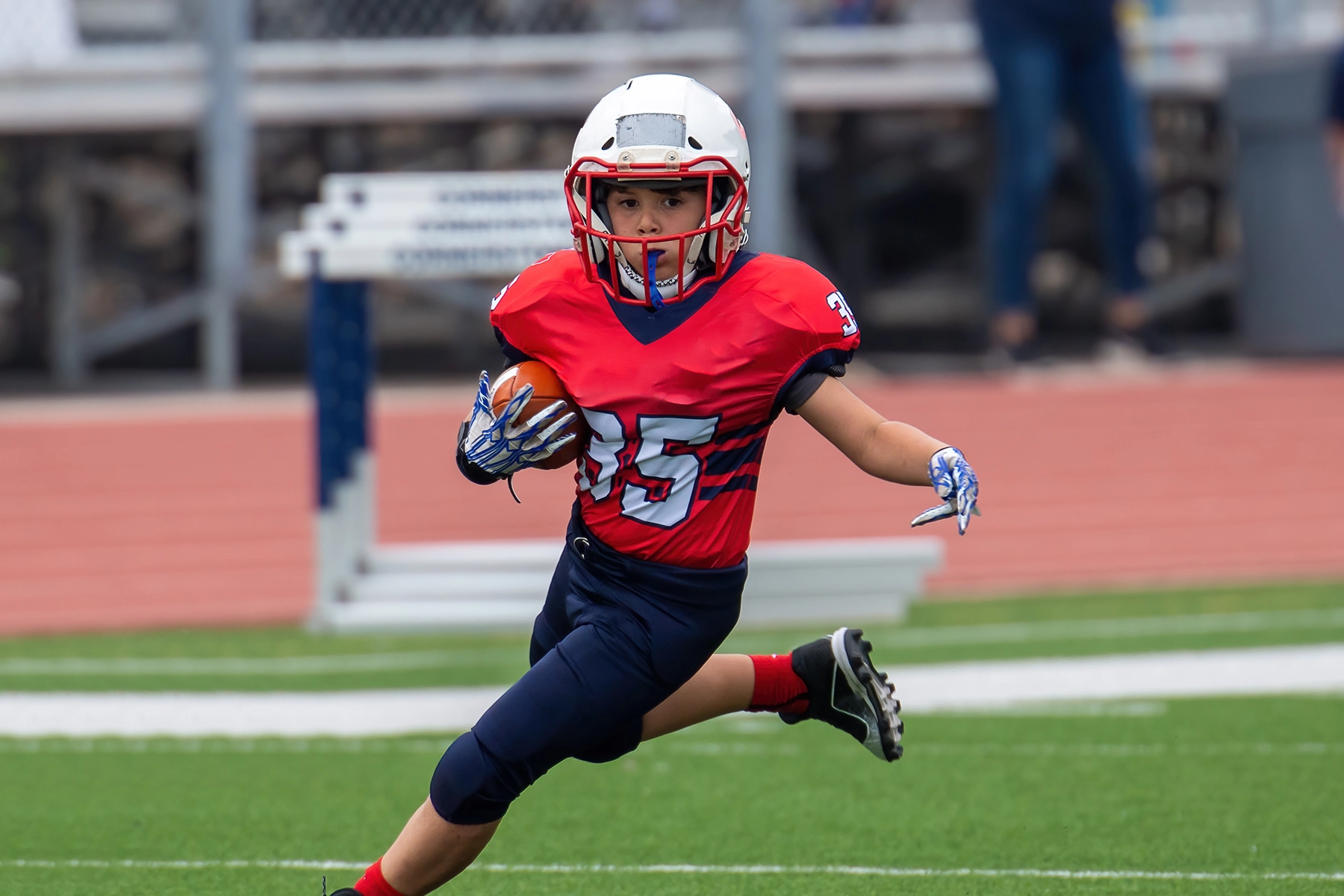Should I Let My Kid Play Tackle Football?

Though football is a beloved American sport, research has shown it can take a steep toll on its players. Over the years, studies have uncovered worrisome cases of chronic traumatic encephalopathy (CTE) in autopsies of professional gridiron warriors.
Now, a new study in JAMA Network Open suggests that high school players also suffer from changes in brain tissue that might eventually develop into CTE.
“This can be very concerning, especially in developing brains,” says Gillian Hotz, Ph.D. neuroscientist and Director of the Concussion Program at the University of Miami Health System, specializing in concussion, neurotrauma, neurocognition, and neurorehabilitation. “But a lot more research needs to be done. We still need to figure out who is high risk [for damage] and who isn’t. Why is it that some players can take hits but don’t develop neurological damage, and others do?”
While the answer to this question is far from resolved, the JAMA study has revived many parents’ concerns: Should I let my kid play football? If so, at what age and what precautions can I take to limit the risks of injury?
CTE is a neurodegenerative disease.
CTE is marked by mood swings, confusion, violence, memory loss, and suicidal thoughts. Caused by repeated head trauma and body hits, it can only be diagnosed through an autopsy of the brain. Symptoms don’t usually appear right after a head injury. Rather, they develop over time. Early symptoms usually cause behavior and mental health problems, but as the disease worsens, the second wave of symptoms includes memory loss and thinking problems.
That’s why both researchers and clinicians need to learn more about changes in brain tissue in adolescent athletes. Of course, it’s not just football players potentially affected by head trauma, but athletes in other contact sports, such as ice hockey and soccer, and military personnel as well.
The brain changes reported in teenage athletes in the JAMA Network Open study are usually not found until middle age.
Some of the most important alterations were in the sulcal regions, the areas of the brain that help with muscle control, decision-making, behavior and language. MRIs also detected tissue atrophy across the cerebral cortex, which plays an integral part in learning and reasoning, among other things.
Dr. Hotz is reluctant to make blanket statements about the dangers of youth football without more research and the use of improved imaging. It’s a complicated topic, she says. But she does remain a strong advocate of sports for children — with the necessary precautions, of course.
Why would you deny your child the benefits of playing? Team sports have a lot to offer beyond the physical aspects. They teach kids teamwork, discipline, time management and friendship. Those benefits outweigh the risks.
Dr. Gilllian Hotz
That said, Dr. Hotz has several suggestions to assuage parents’ concerns:
Enroll your child in a program with certified coaches who are trained to teach and play the game as safely as possible.
Coaches in the Pop Warner Football League, for example, must complete the USA Football Youth Coach Certification, which teaches proper and safe blocking and tackling techniques, health and safety, and anti-abuse training.
Learn the signs and symptoms of concussions.
(Headache, blurry vision, nausea and vomiting, confusion, balance issues, mood or behavioral changes, clumsy movements, ringing in the ears, and drowsiness/fatigue.) Recurrent concussions are associated with CTE. The current recommendation to prevent CTE is to reduce mild traumatic brain injuries and to prevent additional injury after a concussion.
Make sure your child is aware of concussion symptoms, too.
“Some kids don’t say anything [about what they’re feeling after a hit],” Dr. Hotz says. “We have to educate them about the importance of speaking up and we have to do it at a young age.”
Lobby for concussion protocol training at every level.
The Centers for Disease Control and Prevention (CDC) has developed an initiative called HEADS UP Concussion in Youth Sports to offer information on preventing, recognizing and responding to concussion. It’s available to coaches, parents, athletes, and referees, umpires and others officiating at games. For more information on the online training, visit the CDC on Youth Sports.
Opt for flag football instead of tackle football for younger athletes if you’re concerned.
In flag football, “players learn the skills and techniques, just not the tackling,” Dr. Hotz adds. “If they decide to play in high school, then the contact drill can be added later.”
A CDC study found that youth tackle football players experienced a median of 378 head impacts per athlete during the season compared to 8 head impacts per athlete per season in flag football. The federal agency concluded that “non-contact or flag football programs may be a safer alternative for reducing head impacts and concussion risk for youth football athletes under age 14.”
Ana Veciana-Suarez is a regular contributor to the University of Miami Health System. She is an acclaimed author and journalist who has worked at The Miami Herald, The Miami News, and The Palm Beach Post.
Resources:
https://jamanetwork.com/journals/jamanetworkopen/fullarticle/2814507
https://www.cdc.gov/headsup/youthsports/index.html
Tags: concussion symptoms, Dr. Gillian Hotz, sports exam in Miami, sports injuries
